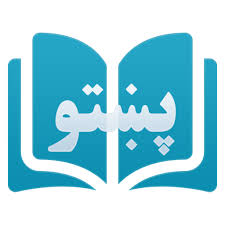Introduction to Pakistani Pashto
Pakistani Pashto, also known as Pakhto or Pukhto, is a significant regional language spoken in Pakistan. It is one of the two official languages of the Khyber Pakhtunkhwa province and is widely spoken in the tribal areas bordering Afghanistan. Pashto is an integral part of Pakistan’s cultural heritage, carrying centuries of history and stories within its phonetics.
The Origin and History of the Pashto Language
The roots of Pashto can be traced back to the ancient Iranian language family. Over the centuries, it has evolved, incorporating influences from various conquerors and neighboring languages, such as Persian and Arabic. Pashto is believed to have developed around the 9th century, and its rich literary history dates back to the 16th century.
Geographical Distribution and Speakers
Pashto is not limited to Pakistan alone; it is also spoken by millions of people in Afghanistan and the Pashtun diaspora. Within Pakistan, the language finds its stronghold in Khyber Pakhtunkhwa and the northern regions. Pashto serves as a symbol of identity for the Pashtun community, uniting them across borders.
Unique Characteristics of the Pashto Language
Pashto Phonology
The Pashto language has a unique phonological system with a rich inventory of sounds, including a variety of consonants and vowels. It features the retroflex “ṭ” sound and several other distinct phonetic elements not found in other Indo-European languages.
Pashto Script
The Pashto script, known as the Pashto alphabet, is a modified version of the Perso-Arabic script. It contains 44 letters and follows a right-to-left writing direction. The script is the foundation of the written Pashto language, preserving its cultural and historical texts.
Pashto Vocabulary
Pashto boasts a diverse vocabulary with words derived from various languages like Persian, Arabic, and English. This amalgamation of linguistic influences has contributed to the richness and complexity of Pashto’s lexicon.
Distribution and Demographics
Pashto-speaking Regions in Pakistan
Besides Khyber Pakhtunkhwa, Pashto is also spoken in parts of Balochistan, Punjab, and Sindh. The language acts as a unifying force among the Pashtun population.
Ethnic Groups and Communities Associated with Pashto
Pashto is not confined to the Pashtun ethnic group alone. It is embraced by various communities, promoting cultural diversity and cohesion.
Phonology and Script
Phonetics and Unique Sounds in Pashto
Pashto boasts a rich phonetic inventory, with unique sounds not found in many other languages. These distinctive phonemes contribute to the language’s beauty and complexity.
Writing System and Script Used for Pashto
Pashto uses a modified form of the Arabic script, making it aesthetically captivating and preserving its historical connections.
Cultural Significance of Pashto
Pashto Music and Art
The Pashto music industry is thriving, producing soulful melodies and captivating tunes. The traditional Pashto dance forms and art have been an integral part of their cultural expression for generations.
Pashto in Modern Times
Pashto in Education
With efforts to promote regional languages, Pashto has found its way into educational institutions. Schools and universities in Khyber Pakhtunkhwa offer Pashto language programs, encouraging younger generations to embrace their linguistic heritage. People started learning Pashto through online language tutors. Who helped them in learning Pashto easily.
Pashto in Media and Entertainment
The rise of Pashto-language television channels, radio stations, and films has given the language a strong presence in the media and entertainment industry
Pashto in Politics
Pashto plays a significant role in politics, particularly in Khyber Pakhtunkhwa and the tribal areas. Political leaders often deliver speeches and communicate with the public in Pashto to establish a strong connection with their constituents.
Challenges and Preservation Efforts
Despite its cultural significance, Pashto faces challenges in the modern era, including the dominance of other major languages and a lack of digital representation. However, various organizations and individuals are working tirelessly to preserve and promote the language through initiatives such as digitizing Pashto literature and creating online resources.
Threats to the Pashto Language
Despite its significance, Pashto faces challenges such as linguistic influence from other languages and a lack of resources for language preservation.
Efforts for Preservation and Promotion
Several organizations and institutions are dedicated to preserving Pashto, promoting language awareness, and producing literature and educational materials.
Pashto Beyond Pakistan
Pashto-speaking Communities Outside of Pakistan
Pashto has a strong presence in neighboring Afghanistan and among the Pashtun diaspora in countries such as the United Arab Emirates and the United Kingdom.
Pashto’s International Influence and Recognition
The global Pashto-speaking community plays a vital role in sustaining the language’s global presence and facilitating cross-cultural exchange.
Conclusion
Pakistani Pashto stands as a testament to the cultural diversity and richness of Pakistan. Its unique phonology, script, and vocabulary have shaped the identity of the Pashtun community for centuries. While facing challenges, the language continues to thrive in literature, music, and politics, reflecting the resilience of its speakers. Preserving Pashto is vital to safeguarding a vibrant cultural heritage for future generations..urweb.eu
FAQs
Is Pashto spoken only in Pakistan?
No, Pashto is spoken in both Pakistan and Afghanistan, with significant Pashtun communities in both countries.
Are Pashto and Urdu the same?
No, Pashto and Urdu are distinct languages with different origins, scripts, and vocabulary. Urdu is an Indo-Aryan language, while Pashto is an Iranian language.
How many people speak Pashto?
Approximately 50 million people speak Pashto worldwide, making it one of the most widely spoken languages in the region.
Can I learn Pashto online?
Yes, there are various online resources, courses, and apps available for learning Pashto.
What are the famous Pashto poets?
Some famous Pashto poets include Khushal Khan Khattak, Rahman Baba, and Ghani Khan, among others.
How many people speak Pakistani Pashto?
Pakistani Pashto is spoken by millions of people, mainly in the Khyber Pakhtunkhwa province and parts of other provinces in Pakistan.
Is Pashto a difficult language to learn?
Learning any language requires dedication, but with the right resources and practice, Pashto can be an enjoyable and rewarding experience.
What are the major dialects of Pashto in Pakistan?
The major Pashto dialects in Pakistan include Northern Pashto, Southern Pashto, and Central Pashto.
Can I access Pashto literature online?
Yes, numerous websites and digital libraries offer Pashto literary works, providing easy access to a rich collection of Pashto literature.
Are there any Pashto language courses available for non-natives?
Yes, there are language institutes and online platforms that offer Pashto language courses for non-native speakers, catering to different proficiency levels.




